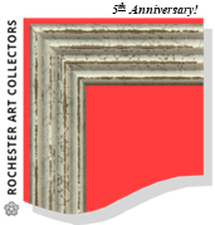|
This is an ongoing series of brief articles highlighting local venues where you can purchase art. Each installment will include a very brief background about the venue at the top followed by a summary of how the venue operates so you'll know what to expect when you visit.  Erich Lehman, founder 1975 Gallery Erich Lehman, founder 1975 Gallery 1975 Gallery was founded by Erich Lehman in 2008 to expose talented artists from Rochester and around the world to a local community that might otherwise overlook those artists. In addition, 1975 Gallery has sought to foster art collecting in general. In the early days the gallery incubated inside Surface Salon where Erich produced many popular and successful exhibitions that were somewhat limited by the awkwardness of shared space. Eventually Erich moved 1975 Gallery into a dedicated exhibition and sales space at 89 Charlotte Street behind the Little Theatre where Ugly Duck Coffee is today. As the gallery's reputation grew so did the crowds. In October, 2015 Erich produced 1975 Gallery's final exhibition at Charlotte Street. Since then Erich has been organizing and promoting exciting pop-up exhibitions around Rochester; most recently in November, 2019 as a part of Rochester Contemporary's Current Seen biennial and in collaboration with the Joy Gallery & Shepard Studio at 498 West Main Street. How is this venue listed on the Rochester Art Collector's SOURCES page? “Commercial Art Galleries & Venues That Function Like Commercial Art Galleries" General Description/Business Model: 1975 Gallery is a "pop-up" gallery. Although 1975 Gallery does not have a permanent "bricks-and-mortar" location it meets many of our criteria for inclusion as a “commercial gallery.” 1975 Gallery operates on the consignment model with proceeds of all sales shared by the gallery and the selling artist. 1975 Gallery is not the exclusive represent for artists outside of their exhibitions except as described below or on an ad-hoc basis. However, Erich has expanded into the realm of art consultancy as a way of supporting artists and collectors. Description of the Exhibition Schedule: Over the past couple of years 1975 Gallery has produced one or two exhibitions each year. Exhibitions are usually active over a three to six week period. Every exhibition kicks off with an opening party. Many exhibitions also feature a closing party as well. Hours of operation: 1975 Gallery is open to the public but only when an exhibition is active. The exhibition hours vary based on the particular circumstance associated with the current exhibition. Generally speaking, however, you can expect 1975 Gallery exhibitions to be open on one or more evenings during the week and on the weekends during the day. Gallery hours during weekdays are unusual but not out of the question. Visits by appointment are usually available. Description of the Exhibition Environment: Typically exhibitions are held in a dedicated, single-purpose space created from a vacant storefront or in collaboration with a non-profit, university gallery or business partner. In any case, you can count on the work being well lit, beautifully installed and exhibited with care. How is the venue staffed? The owner or a staff member is always present when the venue is open to the public. Supplemental staff members are often either volunteers or artists featured in the exhibition rather than employees. Information About The Type of Work Exhibited: 1975 Gallery tends to focus on current or recent work made by living artists and created in nearly all media and in a variety of styles with an emphasis on two dimensional work. The gallery prefers group exhibitions over exhibitions that feature only one artist. What information is available about the artists and artwork during an exhibition? Each artwork has a wall label with a number that corresponds to the exhibition/price list. Ample copies of the list are usually available and may be taken by any visitor. Aside from pricing the exhibition list includes the artists' names as well as the title of each work. The exhibition list may or may not contain information about the media used to create the works. Unfortunately, 1975 Gallery does not usually offer hard copies of artist backgrounds, bios, statements or curricula vitae. However, the owner - who usually acts as curator or co-curator - is deeply knowledgeable. He will enthusiastically discuss any of the artists and explain their work at length. Staff are usually not be as knowledgeable as the owner. But then again who is? Local artists featured in an exhibit may be available to talk about their work as well. 1975 Gallery typically hosts one or more artist talks/panels during an exhibition. What is the typical price range for works presented by this venue? It's not unusual to find works of art in each exhibition available for around $100. The average price is typically in the $400-$500 range. Each exhibition usually has a handful of pieces priced above $1,000. How does this venue handle sales of art work? 1975 Gallery will take payment on site as soon as you are ready. Works are sold on a first-come, first-served basis however the gallery may hold a work of art for a prospective buyer under certain limited circumstances. The gallery will accept cash, credit, debit, personal check, and e-payment. Note: 1975 Gallery will also allow installment purchases in many cases. Work that has been purchased in full may be taken by the new owner once the exhibition closes or if the final payment is received after the exhibition closes, then the new owner may pick the work up after the last payment has been received by the gallery. 1975 Gallery does not maintain a backroom inventory of unsold artwork however the gallery owner may occasionally act as matchmaker with an artist in cases where a collector wants to consider works not included in an current exhibition or works that may still be available from a past exhibition. A small number of unsold works from a recent exhibition may be offered for sale for a limited time after the exhibition closes through an online gallery. You can find the 1975 Gallery online shop HERE. Local delivery and delivery outside of the Rochester area are both possible (at the buyer's expense, of course) but delivery of artworks is not encouraged by the gallery due to the complexity of shipping art. A handling charge will almost certainly apply. How does this venue market and promote their exhibitions? Social media, website, email & word of mouth. Please follow 1975 Gallery on Instagram, Twitter, and Facebook. Does this venue offer any art related services or products besides the artwork itself? Yes. The owner, Erich Lehman, is available by appointment as an art consultant.
0 Comments
by Rome Celli
Reprinted with permission from Art House Press | Copyright 2018 There are probably as many ways to collect art as there are collectors. Collectors bring unique goals, methodologies, biases, predilections, responses, backgrounds and budgets to their endeavor. Some art collectors are mindful while others end up with a collection more‐or‐less by accident. Many collectors discover the theme(s) in their collection long after they’ve begun buying art. Most collectors – including me – buy the work so they can enjoy it in their most intimate space: home. Only one of the people I interviewed for this article told me they think of themselves as art collectors even though all have purchased countless works of art over time. I wasn’t surprised. Most people who own art don’t self‐identify as collectors. They told me they buy art for personal reasons as though actual collectors are motivated strictly by calculated financial, intellectual, professional or academic interests. This isn’t surprising either. Not many mere mortals can live up to the stereotypical image of Art Collector. When the average person thinks of collector‐types they conjure one or more of the classic caricatures: Those select few with money‐to‐burn piling up expensive art objects alongside other extravagant hobbies; investors with hermitically sealed storehouses of art treasures ready to cash in or pay out when the auction gavel falls; obsessive art hunters armed with tightly clenched lists of works prized for their incremental contribution to a body of related collected works; social climbers who slather their lives with high profile artworks to impress. Put another way - most people don’t think they own enough art, spend enough on art or purchase art for the right reasons to be considered a REAL collector. However, if you ask me, whether or not you are willing to admit it, if you own original artwork, you are a collector in some form or fashion. I have collected for more than thirty years. The objects in my collection were chosen because they stimulate, challenge or provoke me. They engage my aesthetic sensibilities. They evoke meaningful memories and deep emotions. Most also bring to mind my relationship with the artist. I believe the objects I own have something important to say that will be revealed over a lifetime. Artwork may be found throughout my home and office. Pieces are placed on horizontal and vertical surfaces where I can experience them. Some pieces are set carefully aside nearby so that they may be rotated into view when I’m ready to re‐engage, while others are taken out of rotation when other works call. A work of art rarely remains in one spot for long. When I move a work – even from one area to another in the same room ‐ it comes to life again and the relationship is refreshed. These works are not decorations; they are part of my everyday existence. I have many rules around collecting, too many to chronicle in detail here. I’ll share one rule: I never buy a work of art I see for the first time unless I am familiar with the artist and I have seen their work over time. I process slowly. It takes time for me to build a relationship with the work; to find out if it resonates. I usually like to meet the artist in person at their studio or wherever their work is on display so I can get a sense of the artist’s methods and ideas. (Sadly, some artists don’t respond to my inquiry and that makes it hard for me to feel comfortable purchasing a work of art.) In addition, I’ll also do some research. If the work stays with me, I’ll go back to see it at least one more time before I make a final decision. Occasionally, I find myself drawn to the artist’s vision, but I’m not ready to buy – for whatever reason. Then the artist goes on my wish list. The process from first contact to completing a purchase can take anywhere from a few days to a few years. On the other hand, when I know the artist and I am familiar with their work I can move quickly. If you are an artist reading this article, I encourage you to respond promptly to all inquiries. Don’t be afraid to engage non‐artists. Invite them into your world. Share your ideas and your passion freely. You don’t have to “sell” the work. The more people who know about you and your work, the more they will appreciate it. Appreciation for your work will lead to sales. Don’t be discouraged along the way. Each inquiry, each interaction, is a new opportunity. For the past several weeks – at the request of this magazine ‐ I’ve talked to other art collectors about their collections, why they collect and how they collect. I also asked them if they had any advice for emerging collectors. The following is what I learned. Amanda Chestnut is decisive. She doesn’t have to linger long in an exhibition before she knows which pieces rise above the others. She has a trained eye resulting from advanced degrees including an MFA from the Visual Studies Workshop. Beyond her formal education, she has on‐the‐ground experience as an arts administrator and years as a practicing artist – added together, you get a well trained eye. Her professional life and her private life are suffused with art. It’s always on her mind. She doesn’t have to work too hard to find opportunities to experience art let alone to be exposed to art buying opportunities. Her art acquisition budget is modest and her wall space is limited, so new pieces have to be pretty strong to make it into her collection. Amanda grew up in Binghamton, New York ‐ about 60 miles south east of Rochester where she currently lives and works. She’s of African and European descent. Hang around her long enough and you’ll probably hear her refer to herself as a “little Italian grandma.” She has a big welcoming smile and a compelling personality. She speaks with confidence and conviction. It’s easy to be drawn into a deep and often intellectual conversation with her. It’s rare for Amanda to pro‐actively seek out new work for her collection. She tends to see exhibitions during the normal course of her life. When she sees a particularly strong work by an artist she respects that is priced in her range she’ll take out her wallet. On occasion she’ll trade works with another artist. A personal connection to the artist is nice but it’s not required. The work needs to stand on its own and because space in her home is so limited, it must be “wall worthy”. Her collection doesn’t have a particular focus in one area or another, one medium or another or one style or another. When a new work comes into her collection it isn’t usually installed right away. Once a work is hung it tends to stay where she puts it. So, she’s careful before she starts measuring and hammering. Amanda’s advice to emerging collectors: Trust your judgement. Don’t buy a piece of art because you expect it to go up in value. Buy art because you are engaged by the work, because you are provoked by the work and because you are inspired by the work. If you do this, you will never regret your decision. Jennifer Miglioratti is impulsive. Jen’s been plugged into the Rochester music and art scene for decades buying work off the walls of clubs, galleries and arts organizations. Certain works will grab her attention and she buys based on impact and instinct. She doesn’t so much acquire a work of art as pounce on it. Jen is a native Rochesterian and grew up in the southeast area of the city near University Avenue. Educated under the watchful eyes of nuns through high school, she studied graphic arts and communications in college. She currently leads the communications department of a prominent real estate development company, LeChase Construction, Inc. Jen is a single mom working in a male dominated environment. She thrives because she has a take charge personality. She works with photographers, writers, graphic artists, and performers. In addition, Jen is responsible for choosing the artwork displayed at the LeChase Construction offices. Making sound, effective and creative decisions is an everyday occurrence for her. We met recently at Fifth Frame Brewing Company in downtown Rochester on St. Paul Street at just about the same coordinates as a former bar called Club Zero where we crossed paths thirty years earlier. Jen is an animated conversationalist and she engages with a forward momentum that melts time. I couldn’t take my eyes off of her as she bobbed and weaved her way through the answers to my questions. While her art acquisition budget isn’t as restrictive as some, like most people the size and configuration of her living space imposes a harsh discipline on her collecting inclinations. Normally once a work is installed in her house it stays put. However, she recently moved into a new home and that has given her the opportunity to rethink and then rehang her collection. In the process, she identified some prime display space for new acquisitions. She’s in the hunt! Jen’s collection includes paintings, weavings, drawings, photography, prints, as well as functional and fine art sculpture. Her aesthetic impulses lead the way. Jen has at least one hard and fast rule about buying art that she was willing to share, “I don’t negotiate the price of artwork with artists. I can either afford the work or I can’t.” Jennifer’s advice to emerging collectors: Instead of buying impulsively (like me) take your time. Think deeply and look at a lot of art before you buy. Enjoy the process of finding the right artwork for your wall, your collection and your life. Jeana Bonacci‐Roth Is emotional. For Jeana collecting is all about the emotional connection she feels to the work and to the maker. It can take her awhile before she purchases a new work of art. She needs some time to allow the work to seep into her – to get into her heart and under her skin. If she doesn’t know the artist, she’ll reach out to the artist, whether the artist is local or not. However, if the work or the artist is local, she does give it special attention. When she buys a piece of art it’s a lifetime commitment. Jeana is a graduate of SUNY Purchase with a master’s degree in literature. She’s married to a restaurateur, an artist and a collector in his own right, John Roth. In recent years she has been exploring her interests and skills in the visual arts realm by making and collecting art. The very first public exhibition of her own artwork was this past fall at Lovin’ Cup in Henrietta near the Rochester Institute of Technology. Jeana has collected aggressively for the past three years or so. During that time she has accumulated quite a bit of art, buying mostly from artists directly. She does not feel at all constrained by the available wall and floor space in her home. If she feels the emotional connection, she buys. It is not her goal to accumulate some particular number or type of artworks. Her collection is growing and happening organically; she loves that fact. The work in her collection is hung salon style: floor‐to‐ceiling. She has a fair amount of work stored around the house as well, waiting for her to choose the best spot for its display. It can take her a fair amount of time to choose the right place to hang work. How does she decide? She considers the relationship between the individual piece and the available spaces, the surrounding works, the purpose of the space, the light in the space and so on. Once the work is hung it’s there for good unless, heaven forbid, she moves. Jeana’s advice to emerging collectors: Allow yourself the space and time to get to know a work of art before you buy it. Don’t be afraid to talk to the artist or visit the artist’s studio. If you’re in a gallery and the artist isn’t available, talk to the gallerist. Give yourself permission to buy art. You’ll love it! Rebecca Rafferty is sentient. To be more accurate Rebecca is acutely sentient and profoundly verbal. She is an art critic as well as the Arts & Entertainment editor at City Newspaper in Rochester, New York. One would expect these traits from a professional art critic and editor. Still, when in the presence of Rebecca discussing art and Collecting, it was easy (for me) to become a bit light‐headed. I was out of my depth and I admit I’m a fan ‐ a huge fan ‐ of her writing. I nearly swooned. Rebecca was raised in Rochester. Her mom, Bev Rafferty, is a well‐known painter who has exhibited extensively in the region. Rebecca graduated from Nazareth College. She was taught by the likes of Ron Netsky, Kathy Calderwood and Maureen Brilla among other notable and accomplished artist‐educators. She reached an academic crossroads at one point and chose a path focused more on writing about art than making art. Yet, she is an avid maker as well as a gifted writer. Some of the work in her collection comes from trades and co‐commissions with other artists. Although by her own admission Rebecca experiences darkness on occasion, there was a playful sparkle in her eyes when we sat across each other in front of Cure restaurant at the Rochester Public Market. She thinks of herself as a “punk‐rock‐beer‐and‐whiskey” sort of person. This is apparent in her general affect which I see as an updated mid‐1960s SDS/Velvet Underground vibe. The pall itself is only vaguely present in the way her cigarette hangs from her mouth and it dissipates quickly whenever her trademark impish smile emerges. Rebecca has what she describes as a fairly large collection of art. Multiple interests drive her collection. She is drawn to work that depicts wolves or other wild animals – particularly when the animals engage or are otherwise in conflict with humans. She is also drawn to mysteries of the moon and dark fantasies akin to Neil Gaiman’s Sandman series. Her political interests are never far removed from her mind or her collection. So, it’s not surprising to find out that a good bit of the work she collects is either explicitly or implicitly political. The spirit of David Bowie is also a presence in her collection. Like Jeana, she hangs the work salon style in her home. Lately, she’s looking forward to an upcoming move that will give her the chance to reassess and then reinstall her collection. Rebecca’s advice to emerging collectors: Art is not a frill. It’s an essential element of the human experience. Owning art – living with art – will enrich your life. Rome Celli is a co‐organizer of RochesterArtCollectors.org along with Sarah Webb. All images copyright Michele Kisly 2019 For the first time in memory a large group of commercial gallery owners and non-profit arts organization directors/curators met in one place to discuss the Rochester regional art market. The meeting was convened by Rochester Art Collectors and took place on Thursday, February 7th at RIT's newly opened City Art Space in downtown Rochester. A similar (albeit smaller and more exclusive group consisting only of commercial gallerists) was convened by Rochester Art Collectors and held at Axom Gallery and Exhibition Space in April, 2018. The goal of these meetings is to help foster a spirit of cooperation in support of growing the art market and enhancing the art scene in our area. Leaders from the following organizations participated on February 7th: 1975 Gallery, Artshow.org, Axom Gallery & Exhibition Space, Bausch + Lomb Corporate Gallery, Ceramics Gallery at Flower City Arts Center, Chase The Art, Colleen Buzzard Studio Gallery, Create Art 4 Good, Flower City Arts Center, Gallery Q, Geisel Gallery, Genesee Valley Council On The Arts, Joel Sapienza, Kristen Campo Fine Arts, Lumiere Gallery, Makers Gallery and Studio, Memorial Art Gallery Gallery Shop, Michael Deming Antiques, Oxford Gallery, Phillips Fine Art & Frame Gallery, RIT City Arts Space, RIT Events Office, RIT Shop One, Rochester Contemporary Arts Center, Print Club of Rochester, Patricia O'Keefe Gallery at St. John Fisher College, Roslyn Goldman, UUU Art Collective, University Gallery at RIT, Whitman Works, and The Yards Collective. It should be noted that all the organizations represented at the meeting offer art for sale at their locations. Some of the venues represented operate on a for profit basis while others are legally recognized as not-for-profit organizations. The discussion centered on ways to work together. The agenda for the meeting was generated by the participants prior to the meeting and then approved by the entire group on the night of the meeting. Roz Goldman spoke to the group at the outset of the meeting about her experiences as a gallerist and leader of the Rochester Area Art Dealers (RAAD) group from years past. Unfortunately, Roz had to make another appointment and left after her presentation. Following Roz's presentation we did introductions around the room the group engaged in a general conversation about the regional art market followed by a deep dive into areas of common interest and ways the participants might work together. There was a brief conversation about the potential for programs with a regional reach. Time ran out before the group could consider ideas about developing a series of awards recognizing individual artistic achievement on a yearly basis and before an update on recent actions to secure more public funding for the arts in Rochester. The meeting ended with a summary of action items moving forward.* The following is an executive summary of the conversation and, in some case, next steps:
For it's part, Rochester Art Collectors supports local galleries and non-profit arts venues collaborating on as many levels as they feel comfortable. The group also supports the development of a large scale, high visibility, high quality art fair in our area. Rochester Art Collectors continues to believe in the value of regional cooperation and will continue to support efforts in that direction as well.
Over the course of this year a number of venues that exhibit and sell art opened while others closed. Some venues went through a metamorphosis of one sort or another in 2018. Here are the highlights. This article was revised and updated on Saturday, December 26, 2018 at 11:16 am EST. Rochester: Makers Gallery is in transition. Over the past several years artist and gallerist, Alex Gruttadaro, developed one of the more exciting and successful hybrid commercial art galleries in our area on the third floor of 34 Elton Street in Rochester. In addition to running the gallery he also ran a coffee bar and an event venue out of the same space. Sales in the gallery were strong. His event business was so good he suspended the coffee bar business to make more room in the calendar for events. His business successes, however, came at a price. According to Alex, the demands of running an active gallery, coffee bar and event space consumed all of his time leaving very little for his own creative and personal pursuits. As a result, at least for the time being, Alex has recently returned the Makers commercial gallery space back into his private art studio. Alex has not ruled out re-imagining a new sort of gallery informed by his experiences with Makers or even re-launching Makers Gallery. While a new gallery may appear before too long it won't be before Alex has had a chance to immerse himself in his art and his family. Stay tuned! Rochester: RIT City Art Space is open. RIT's new City Art Space, at 280 Main Street (in the former Sibley's department store building), opened with a large private celebration on Thursday, December 10th. The new gallery opened to the public on Friday in time to take advantage of the December "First Friday" exposure. City Art Space is a significant upgrade in exhibition space combined with a dramatic re-branding as compared to prior iterations of RIT's "Gallery R" spaces - first on Park Avenue and then on College Avenue near the Memorial Art Gallery. The new gallery has large windows that look out on Rochester's famous Liberty Pole sculpture, designed by James Johnson, as well as main street giving the space a big city feel. According to their press release, City Art Space is a premier exhibition venue for RIT students, faculty, alumni and more. It is also a site for experiential learning for students across RIT’s College of Art and Design and beyond. The gallery will serve as a preeminent venue for the College Art and Design, which houses six schools: Art, American Crafts, Design, Film & Animation, Media Sciences, and Photographic Arts & Sciences. RIT faculty, staff and students from all six schools contribute their time and talent to sustain the gallery’s exhibition programming, and students gain valuable experience working in a professional gallery setting. City Art Space is open to the public during regular hours. Although I didn't see any notices to this effect, if City Art Space follows Gallery R's policies, there will be no admission fee to get into the gallery. As in the past much of the work shown in the gallery will be offered for sale. Rochester: 1975 Gallery has re-emerged in a new format. After a three year hiatus 1975 Gallery re-emerged in pop-up form in the fall of 2018 with a sizable Halloween themed group show titled "Dearly Departed". Both the location on South Avenue next to Surface Salon and the theme were carefully chosen to reflect back on the gallery's roots. 2018 marked ten years since gallerist, Erich Lehman, launched 1975 as a pop-up inside Surface on the opposite side of South Avenue from this year's exhibition. 1975 Gallery gave up their bricks-and-mortar commercial retail location on Pitkin Street behind the Harts Local Grocery after five years in 2015. Lehman says Dearly Departed was successful. Hundreds of patrons packed the gallery on opening night and sales were brisk even though the exhibition lingered only six days and had very limited hours. Sales from the show continued even after the exhibition officially closed. He may post some or all of the unsold works from the show on 1975's website before too long. In addition to holding down a full time day job at RIT Lehman is also the co-curator and core organizer behind Rochester's internationally renowned public art project Wall\Therapy. Given his time limitations It's not surprising he thinks about 1975 Gallery's future strategically. While another traditional retail location isn't in the picture for 1975 Gallery at the moment other plans for the gallery are apparently in the works. We understand Lehman is working on an even more ambitious 1975 pop-up exhibition in the first half of 2019. Honeyoe Falls: Fleuron is open. Fleuron opened their doors at in the center of the Village of Honeoye Falls at 10 North Main Street in June of 2018. This new retail venture has it's home in a charming early twentieth century storefront with big windows. Fleuron is what we think of as a "hybrid" commercial gallery. In this instance the fine art gallery is nestled between a botanical boutique at the front of the shop and a small graphic design work space tucked away behind the gallery, up a small flight of stairs. You might ask, why the name Fleuron? Well, fleuron is a French word meaning, “horticultural ornament”. It comes from the centuries old typographic and printing traditions that date back to the Renaissance. When you learn more about the owner, Lisa Mauro, and her vision you'll understand why that particular word is a perfect descriptor. Mauro received her BFA from Parsons School of Design and an MFA from Rochester Institute of Technology. In addition to operating the gallery she has a graphic design business and she teaches graphic design at Nazareth College. That's not all. She is not only an avid maker she is also an avid grower. The front of the shop features her own organically grown, fresh specialty cut flowers available from May–October. So, she has married her advanced education in the arts with her passion for graphic design and gardening. The gallery will mostly focus on contemporary artists living in the Rochester-Finger Lakes region. Exhibitions will rotate on a more-or-less monthly basis. Some shows will feature one artist while others may have a theme with the sort of call-for-work, jurying and curation that goes along with group exhibitions. In addition to living artists the gallery also offers fine art prints by notable national and international artists from the mid-twentieth century. Pittsford Village: Sylvan Starlight Creations is open. Sylvan Starlight Creations, open since the summer of 2018, is an artisan gallery and fine art shop located in the Village of Pittsford at the eastern end of Schoen Place. The business features the fine artwork and exquisite craftsmanship of more than 60 of the area's top local artists. There is always a lot to see inside the shop: from fine art & paintings to jewelry, metal art, home decor and so much more! They offer a wide range of mediums, styles and prices, There is always something for everyone in this lovely village shop. One or more local artist/artisan will be highlighted monthly with an exhibition and an opening party to kick off the show. The retail space will be shared with dozens of other local artists and artisans day in and day out so you don't have to wait until you see an artist of interest. Stop in anytime. Rochester: Rochester Fantasy Art Gallery is open. The proprietor, Thomas C. Chaffer, saw a "fantasy art" niche and decided to fill it. Chaffer had been doing Art Instruction for over 6 years based out of a space in Fairport before moving to the new location in the City of Rochester at 873 Atlantic Avenue. He opened his doors about a month ago. His plan is to show artwork that falls between "fine art" and fantasy/science fiction illustration. He is beginning by showing Rochester-based artists and that will certainly continue. However, he also plans to expand the scope of art on exhibit to include works made all over the United States; including work done by widely recognized masters in the fantasy/science fiction genre. Although the exhibition space itself is fairly modest in size there's a congenial outdoor area for warm weather entertaining. Chaffer's studio is located just behind the public space. Before too long the gallery website (www.rochesterfantasyartgallery.com) should include lots of additional information about the new venue. Nan Miller Gallery has re-emerged in a new format. One of Rochester's longest running commercial galleries, Nan Miller Gallery, closed it's only bricks-and-mortar storefront near the end of 2017. At that time gallerist, Nan Miller, indicated she was retiring from the business after decades of service to corporate clients and individual collectors across the globe. We recently learned Nan Miller has decided to re-launch without the burden of a full blown commercial retail location so that she can continue to represent artists and act as an art advisor. Nan has retained her former website and domain name to more easily reconnect with her long established client base. As of 2018, Miller represents a select stable of her favorite artists who encompass a broad range of styles, mediums and price points. She educates clients about artists’ techniques and how their artwork relates to collecting in today’s market, as well accommodating their specific needs. Nan specializes in artwork not readily accessible to the area, such as images by Modern Masters, renowned metal sculpture, cutting-edge glass, wood and mix-media designs. Nan has served as a key player in the art industry for 45 years. Her former retail location was the longest running family-owned art gallery in Rochester. Kristen Campo Fine Art has opened. When the Nan Miller Gallery closed its bricks-and-mortar retail location late in 2017 Kristen Campo, one of Nan's longtime employees, decided it was time to step up. She had worked under Nan for more than a decade. Kristen knew the business from the inside and she had a good base of experience to draw from as she set out in 2018. In addition to working in a gallery Kristen is an established interior designer with an active client base, Incorporating artwork into her design practice has been a mainstay. Kristen Campo Fine Art does not have a retail location. Instead Campo has focused on bringing a wide array of established and emerging Contemporary artists to her current design clientele and to the art buying public through art fairs at various locations around the country. Campo realized a visionary goal in 2018 by organizing and presenting what she referred to as the first Contemporary Art Fair of Rochester in November at the Strathallan on East Avenue. By her count near 1,000 people filed through this the Fair over a three day period. She is currently planning a follow-up for 2019. Canandaigua: Jeanne Beck Art Gallery & Studio is in transition. Jeanne Beck opened her gallery and studio in June of 2017 with a vision: to combine a her own art studio with a pubic gallery & exhibition space in the City of Canandaigua. She also wanted very much to help to make non-objective, non-representational and abstract artwork more accessible to the public and to collectors. It seemed to her that representational art is more widely accepted and abstract art is less well accepted in our region. Her second floor unit, located on Main Street between Phoenix and Beeman Streets, was notable not only because of it's beautiful exposed brick walls and views of downtown Canandaigua but also because her studio work space was entirely open into the public exhibition space. Visitors were commonly treated to both works in progress as well as finished works created by many local artists. As time went on Jeanne expanded the scope of her endeavor beyond mere exhibitions into the realm of workshops and demonstrations on topics such as encaustic painting. In addition, she hosted "residency" programs for local artists that resulted in collaborative artworks that were then displayed. Late in 2018 Jeanne decided she was no longer able to balance her own creative interests with running the gallery. She will retain the space as her studio in 2019 and may well offer exhibitions in the future but she will not operate as a proper gallery for the time being. Clifton Springs: Main Street Arts has converted into a nonprofit arts organization. Main Street Arts was created in 2013 as a for-profit art gallery in Clifton Springs, New York; a thirty-five minute drive from downtown Rochester. The Main Street management team developed a strong business selling art and then added a range of community-based arts programs including everything from workshops for area students to full-on artist residency programs alongside programs for non-artists. Over time it became clear to the director, Bradley Butler, that in order to fill the enormous needs/interests they uncovered Main Street would best serve their community by converting to a nonprofit arts organization. In an email to it's customers and friends on Monday, December 24, 2018 Main Street Arts announced the conversion to nonprofit status has been completed. Effective immediately Main Street Arts is a legally recognized nonprofit arts organization. As a result, donations to the new organization will be tax deductible, if you qualify and itemize your charitable donations. In addition, Main Street will be able to apply for grants from the government as well as other sources that require nonprofit status. Main Street Arts has had a strong regional orientation from its inception. On occasion the gallery supplemented it's regional offerings with artists from all over the United States. Looking forward, based on their new mission statement, it appears they expect to reach even further to include artistic works from all over the globe. Ten artists from the region are listed on the Main Street Arts website as being represented by the gallery: Pat Bacon, Chad Grohman, Patrick Kana, Meredith Mallwitz, Robert Ernst Marx, Lanna Pejovic, Jody Selin, Mike Tarantelli and Sylvia Taylor. It's not common for nonprofit arts organizations to represent individual artists. We'll have to wait-and-see if Main Street continues to represent these artists under it's new auspices. Have Hope Tattoo and Gallery has opened.
There's a new alternative art gallery at New Hope Tattoo and Gallery. The tattoo parlor opened in August of 2018. The first art art exhibition was held in September. To get to the dedicated gallery space inside New Hope you go past the reception area and down some stairs to the lower level. When you walk into the gallery you'll be impressed by the look. There are no white walls in this gallery. Instead New Hope has designed the space with what looks like reclaimed barn wood to match the finishes upstairs in the reception area. The business owner, Zach Wheeler, says he'll either curate what's shown in the gallery himself or collaborate as well as invite outside curators to plug in. He expects exhibitions to cycle in and out every couple of months or so. Even though Rochester Art Collectors has only been in existence for nine months our group has offered twenty-one programs with the help of seventeen partner organizations. All but two of the programs were free to attendees. "Lure Of The Local," a panel discussion developed in collaboration with the Memorial Art Gallery, and "Think globally. Create, experience and collect locally," done in partnership with Rochester Contemporary, both required an admission fee to those who were not already members of those institutions.
We don't have an exact count but we believe our programs exposed attendees to several hundred artists' works for sale over the course of 2018. Generally speaking we try to hold our events inside of galleries during group exhibitions so attendees can both see and purchase works of art as well as pick up a little education. Event attendees were informed on a wide array of topics at our events including understanding and collecting glass, ceramics, and photography to printmaking, and more. All but five of our programs were open to the public. Our five member-only programs in 2018 fell into two categories: "Collectors Circles" and "Collectors Previews". Members participating in a "Collector Circle" event may bring a piece of art from their collection created by someone other than themselves to talk about with the group. In addition, we have a guest speaker present information of interest to collectors. Usually we hold "Collectors Circle" events in a gallery during a group show. Members were also invited to three "Collectors Preview" events. Every so often we are able to gain access to exhibitions BEFORE the show is open to the public thereby providing members an opportunity to see and purchase works of art before the general public. Here's the list of program events held in 2018. The most recent events are shown at the top.
Rochester Art Collectors in collaboration with Phillips Fine Art & Frame Gallery presents: Date & Time: Thursday, January 10, 2019 at 6:30 pm Location: Phillips Fine Art & Frame Gallery Hungerford Complex 1115 East Main Street - Door #9 MAP LINK Click here to reserve your tickets Nearly every year Warren Phillips carefully curates a show of works from a variety of collectors and mounts a exhibition and sale of those works. On Thursday, January 10th we'll give you a chance to see and purchase choice works of art being sold by other area collectors. These works have rarely, if ever, been seen in public. Some pieces hae been in private hands for more than fifty years! 6:30 pm: Social/Mixer Free light nibbles and drinks. Check out the "2019 Collectors Exhibition & Sale" 7:00 pm: Presentation & discussion Warren Phillips & Bleu Cease "Refining or Reducing Your Collection Through Deaccession & Donation" Topics to be covered...
Presenters: Warren Phillips, art dealer and owner of Phillips Fine Art Framing, will look at the options for selling your artwork: retail consignment, DIY (ebay, craigslist, etc.), public auction, etc. Bleu Cease, Executive Director & Curator at Rochester Contemporary, will talk about donating works of art to a museum or another non-profit institution. >> This event is free and open to the public. You do not have to be a member of Rochester Art Collectors to participate. However, registration in advance is required. Click here to reserve your tickets<< This event will take place unless Rochester City Schools are closed due to weather conditions. 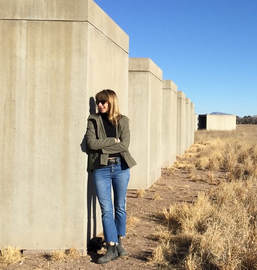 by Jeanne Beck Reprinted with permission from Owl Light News | Copyright 2018 There is a growing interest in collecting original art works by regional artists. Rochester Art Collectors started in 2017; its mission is to encourage more individuals to recognize the joys of collecting and help them become more knowledgeable and informed about regional art and artists. Spurring the development of this new organization are its co-founders Sarah Webb and Rome Celli, both dedicated collectors. Rome Celli, a local realtor, has been collecting art since he ran an urban art gallery in the 1980’s. He has long known what a wealth of artistic talent there is in Rochester and the 60-70 mile radius around it. As an avid collector, Rome became keenly aware of the need to expand the love of collecting. “I wanted to do something to support visual arts in the region,” he explains. “We certainly don’t lack for excellent and diverse artists in our area. What we do need are more collectors . That’s where Rochester Art Collectors comes in. We’re the gardeners who are sowing the seeds and providing the encouragement, education and exposure to help grow a host of strong new collectors who will love and appreciate what our regional artists have to offer.” Co-founder Sarah Webb is a long-time collector, exhibiting artist and author, university instructor and community arts volunteer. Sarah has known Rome since they first worked together on the former Pyramid Center Board in the 1990’s. “When we ran into each other again in 2017 and I learned he was starting this organization, I knew I wanted to get involved.“ The two are building Rochester Art Collectors’ programs and events to help redefine both what a collector is and how to become one. Rome frequently speaks to groups about collecting ; when he does, he asks people how many original works of art they have in their homes. According to Rome, “If you own two pieces of original art, you are a collector!” He and Sarah are excited about creating opportunities for people of all ages and interests to learn to trust their instincts and buy what they love. Sarah says she likes to ask people, “What does it mean to live with art? “ She also offers advice to beginning collectors. “Notice what you are drawn to. Is it a specific subject matter or medium, for example? What makes you want to look, and look again? “Once you take your first art work home, pay attention to what happens next. How does the new work commingle in your home? What happens when you pair it with something you already have; perhaps another formal piece of art or perhaps a piece of driftwood that you picked up along the shores of Lake Ontario? How does that scraggly line in the artwork perhaps mimic the line of the horizon you see through your window? “  What is Rochester Art Collectors? Rochester Art Collectors is a privately funded, independent, non-commercial group created to promote collecting all types and styles of art. This all-volunteer group is currently comprised of about 300 members who have a shared interest in building a strong, vibrant arts scene in the region. Rochester Art Collectors does not provide information on the investment aspects of collecting; there are ample other resources for that. Members of Rochester Art Collectors do get opportunities to meet other art enthusiasts, visit galleries, interact with and support artists, and learn more about collecting, types of collections and ways to get started. Rochester Art Collectors does not represent artists and does not sell art. It does not endorse or recommend any particular venues for purchasing art. It does list venues where you can purchase art on its website and invites website visitors to suggest other venues that may not be listed. The works you will see shared on the website are not for sale; they are owned by collectors and are there to give visitors to the website an idea of the range of types of art others are collecting in this area. Members are occasionally invited to a tour of private collections. These tours tend to be very limited in size and offered on a first-come, first-served basis. 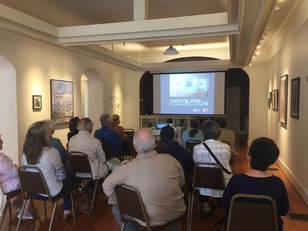 Recent Events In a recent event at Main Street Arts in Clifton Springs, gallery director and curator Bradley Butler led a discussion on curating. The event was called “Curating Your Collection” and paralleled the curating process at Main Street Arts to the curating that happens in your own personal art collection. “Bringing several different styles or types of art together on the walls of your home—perhaps around a single theme—can spark a meaningful dialogue and the whole is often greater than the sum of its parts. That is something I enjoy doing in group shows at Main Street Arts because it can make people see things differently.” Butler said. The group saw examples of past exhibitions that were high points for Main Street Arts as well as images of Butler’s own art collection What are the benefits of joining Rochester Art Collectors? • Participate in building a strong, vibrant arts scene. • Broaden your exposure to artists and artwork. • Meet other art enthusiasts and collectors. • Build your art collection. • Interact with and support artists. • Access to member-only information, services and content on this site. • Access to member-only events and activities: Private tours, art exhibition previews • Conversations about art with other collectors • Participate in important decisions about the group. Membership is FREE If you would like to learn more about Rochester Art Collectors upcoming events, about buying and collecting art and if you’d like to meet others who share your interests, just go to: www.RochesterArtCollectors.org. Click on the “Join Rochester Art Collectors” button to get involved. It’s easy, it’s fun and it’s free! Jeanne Beck is a mixed media artist and owner of Jeanne Beck Art Gallery & Studio, 154 Mill St., Canandaigua, NY. The gallery features periodic regional guest artists, classes and workshops as well as original works. Open Wed 12-4:30, Thurs-Sat., 10-4:30. 585-704-6419.
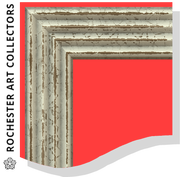 When RochesterArtCollectors.org launched its website unofficially in December, 2017 we set goals around what we wanted to accomplish and then took a shot in the dark designing the site. Before the organization's launch on April 1, 2018 we tweaked the website layout and much of the content adding pages describing the organization's mission and vision; plugging in a reservation system for our programs and adding a members only section. Over the past couple of months we have evaluated our results, considered feedback from members (as well as non-member users) and started to edit and update the site to better match our goals and the expressed needs/interests. This process will be ongoing. Here are some of the most recent updates: HOME:
SOURCES:
RESOURCES:
EVENTS:
NEWS:
ABOUT:
#ROCTHEART:
CONTACT:
We are still working on revisions and upgrades in our "members only" section. More on this in a future post. On Tuesday, October 23rd at 6:30 pm we held our second "Collectors Circle" program. This one was held at Oxford Gallery. It was just as successful at the first one, held earlier in the year at Makers Gallery.
The Collectors Circle program is open only to members and seating is limited to just 30 people. We like to gather in an exhibition space during a current show. Typically a special guest speaker is invited to present on a topic of interest to member-participants. The first 30 minutes of the program are are social . Members take some time to look at the work on exhibit; grab a bite and a sip while chatting with one another. Before too long we gather in a large circle. Each collector presents an original work of art from their collection to the group. Usually we hear a little background about the work and how the collector came to own it. Sometimes we hear why it's important to the owner's collection or why it's important to the collector or both. This time around we heard stories about works of art saved by relatives who were refugees fleeing Nazi's during the World War II era and later given to the collector. At one point the lights were dimmed so that we could all experience the luminescence of an Op-Art piece from the 80s. An early 20th century landscape was presented along with details about the painter and it's importance to the collector. We even saw a bronze casting of a disposable cup lid from a show in 2016; As you can tell there was a wide range of work! After the collectors presented their works of art we turned the floor over to Oxford Gallery owner, Jim Hall. He talked about the long history of Oxford Gallery. Established in the 1960s Oxford is the longest continuously running commercial gallery in Rochester. Jim and his wife, Ginny, have owned the gallery for 25 years. Oxford represents over 40 artist and exhibits their works on consignment - usually organized around exhibition themes - throughout the year. In addition, Jim is an active art dealer specializing in 19th century works. He closed his talk with a traditional definition of art collecting that prompted a lively discussion. The group broke up around 8:30 pm. The next Collectors Circle will be held early in 2019. Details will be announced sometime after January 1, 2019.  Mark Harrington Mark Harrington We are very pleased to announce Mark Harrington has become the 300th member of Rochester Art Collectors! It seems Mark was destined to appreciate and collect art. At the age of eight, without his parents knowledge, he rode his bike ten blocks to a local grocery store and bought a small oil painting of ducks in flight with his allowance. He gave that painting to his Mom. She kept it on her desk until she passed. It now hangs in his study in Pittsford. That was just the beginning.. During his early school years Mark's interest in art intensified and his activities expanded to include collecting. In high school Mark became friends with the daughter of the curator at the McNay Art Institute. While attending a exhibition at the McNay Mark was introduced to Lita Albuquerque, whose work is in the Museum of Modern Art's permanent collection. Lita and her work made a lasting impression on Mark. Their friendship blossomed. While attending college in Austin Mark began collecting art with some regularity. He made a practice of visiting student art exhibitions, purchasing work that spoke to him along the way. After business school while living in New York City in 1979 Mark became acquainted with Dorothy and Herb Vogel through Tom Armstrong, then curator of the Whitney Museum. The Vogels were two of the most remarkable people Mark had the pleasure of knowing. They were a fixture on the NYC art scene. The Vogels introduced Mark to important art dealers and taught him the ropes. Thanks to the Vogels he met Gracie Mansion at the opening of the first gallery exhibit of “graffiti art” created by Keith Haring and Jean Michel Basquiat. During their lifetimes the Dorothy and Herb Vogel amassed over 4,000 minimalist and conceptual works along with a fair number of abstract expressionist works. They built their massive collection on modest civil servants’ salaries. Herb worked in the Post Office and Dorothy worked as a librarian. They lived in a small two-bedroom walkup on 86th Street in Manhattan. Ultimately their collection was bequeathed to 50 different museums: 50 works to each of 50 museums in 50 states. Harrington says, "The Vogels taught me the importance of getting to know the artist and seeing their work progress over time. Most importantly, they stressed that if a work moved me, and it was the first thing I saw in my mind when I woke up, go buy it on the spot." As with the Vogels, I never have and never will sell any piece I buy. Investment value is unimportant to me. What matters is how my heart and soul respond. Herb said he never wanted to build a collection, it just happened. He taught me to think of each piece as a friend that lived with me. "I joined Rochester Art Collectors to participate in a vibrant community of art lovers, to support artists and to purchase beautiful works of art." |
Categories
All
Archives
March 2021
Header image © Roy Sowers 1999
Click for more info |
Rochester Art Collectors is a privately funded, independent, non-commercial group organized to promote collecting art.
The artwork you see on this site is not for sale. It is owned by private collectors. Rochester Art Collectors neither sells art nor represents artists. Rochester Art Collectors is not owned, managed, or controlled by any outside business, organization or enterprise. Rochester Art Collectors does not endorse any particular style of art, any particular artist, nor any particular venue to purchase art.
No entity on our site has paid to be listed. All listings on this site are free. A listing on this site does not constitute an endorsement by Rochester Art Collectors. Rochester Art Collectors strives to accurately represent all listed entities. Rochester Art Collectors reserves the right to limit, arrange, categorize or describe a listed entity in any way that suits the interests of this group. Any entity listed on this site will be removed by request of the listed entity. Any listed entity may be removed from this site by Rochester Art Collectors for any reason.
Privacy Policy: Rochester Art Collectors will not share any personal information about you without your explicit permission in advance. Rochester Art Collectors commonly uses eventbrite.com to invite members and the public to it's programs. As a result, members' names and email addresses may be collected by eventbrite.com. Click here for information about eventbrite.com's privacy policies.
The artwork you see on this site is not for sale. It is owned by private collectors. Rochester Art Collectors neither sells art nor represents artists. Rochester Art Collectors is not owned, managed, or controlled by any outside business, organization or enterprise. Rochester Art Collectors does not endorse any particular style of art, any particular artist, nor any particular venue to purchase art.
No entity on our site has paid to be listed. All listings on this site are free. A listing on this site does not constitute an endorsement by Rochester Art Collectors. Rochester Art Collectors strives to accurately represent all listed entities. Rochester Art Collectors reserves the right to limit, arrange, categorize or describe a listed entity in any way that suits the interests of this group. Any entity listed on this site will be removed by request of the listed entity. Any listed entity may be removed from this site by Rochester Art Collectors for any reason.
Privacy Policy: Rochester Art Collectors will not share any personal information about you without your explicit permission in advance. Rochester Art Collectors commonly uses eventbrite.com to invite members and the public to it's programs. As a result, members' names and email addresses may be collected by eventbrite.com. Click here for information about eventbrite.com's privacy policies.
Current Membership:
Watch us grow!

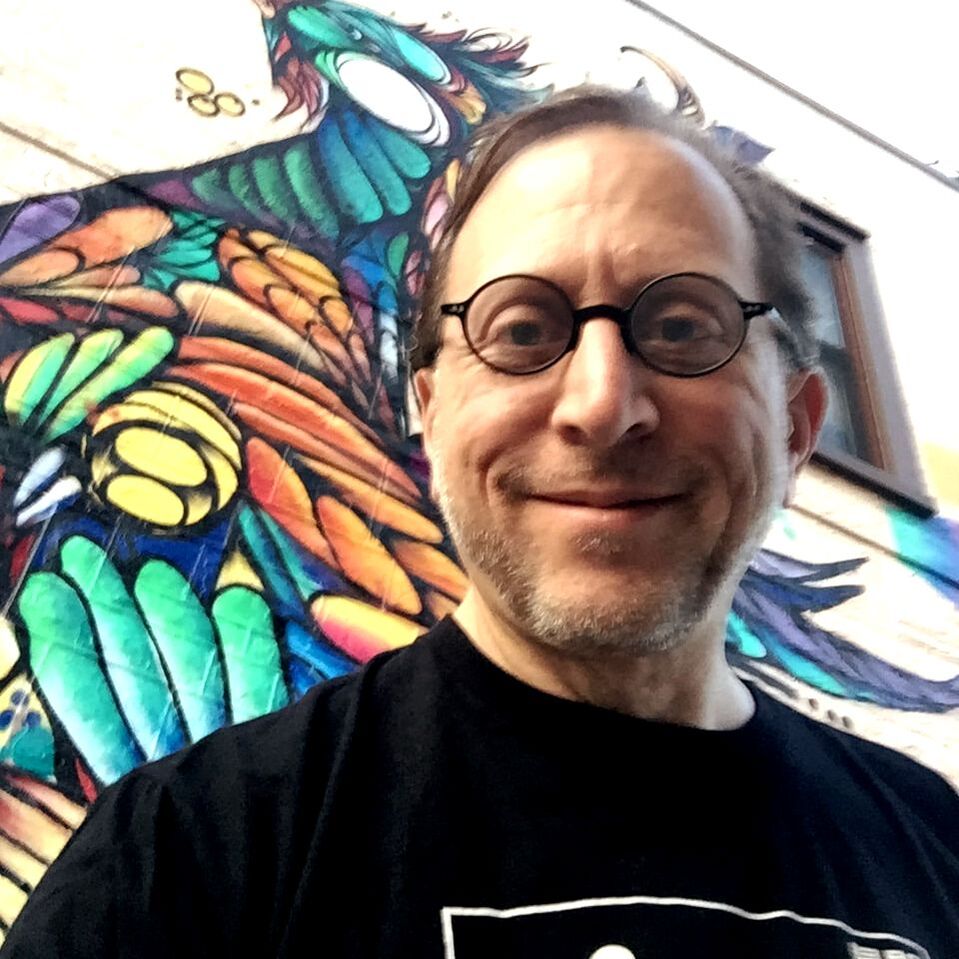

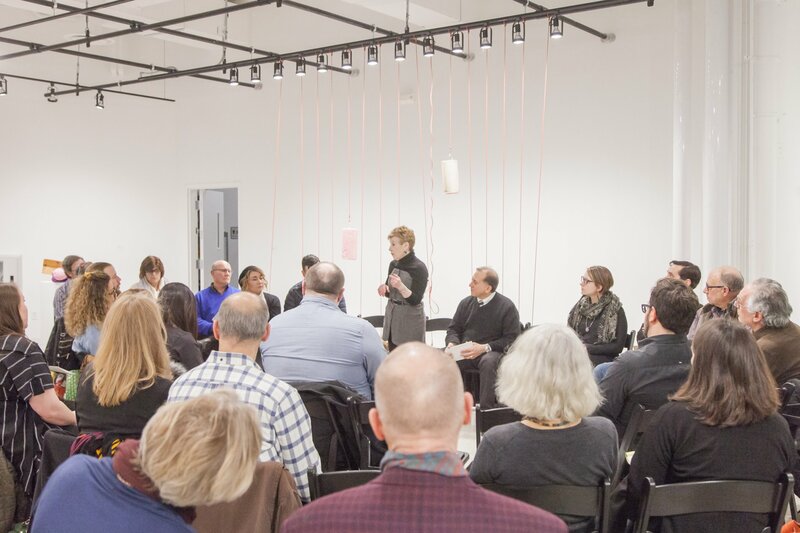
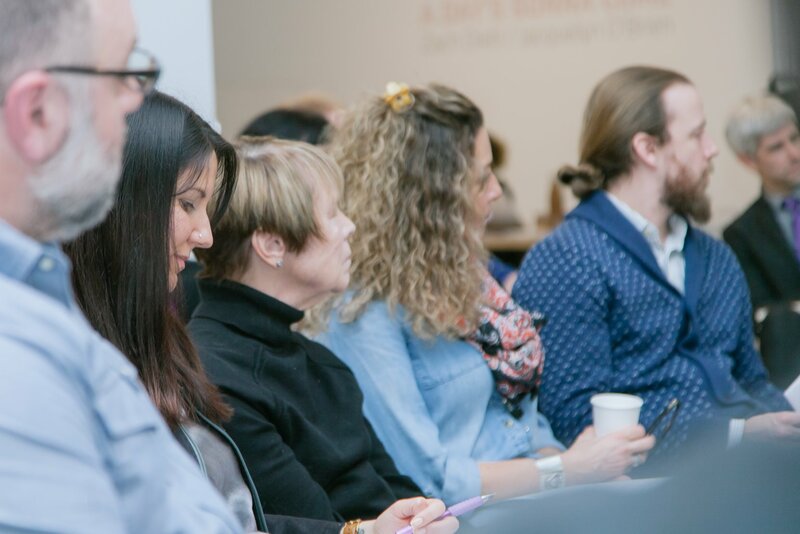
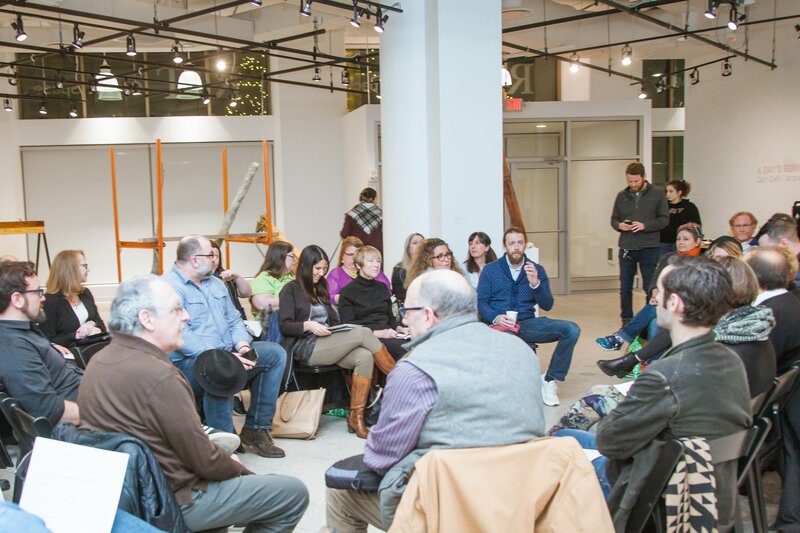

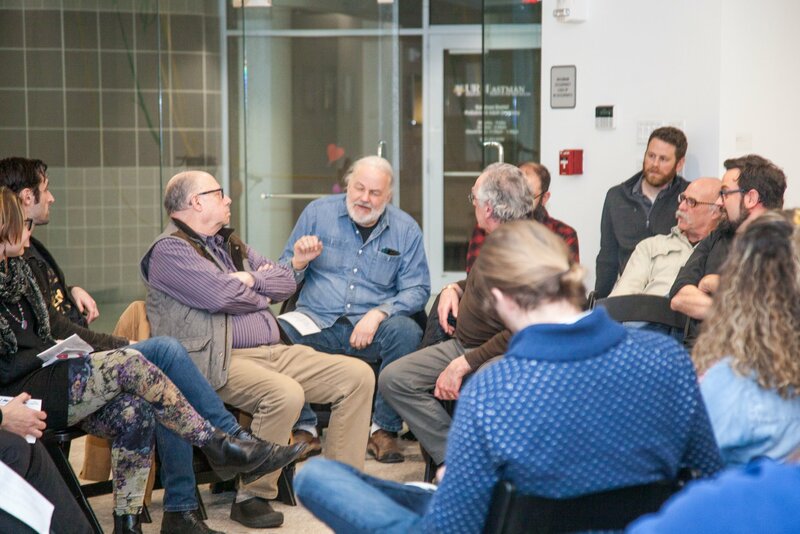
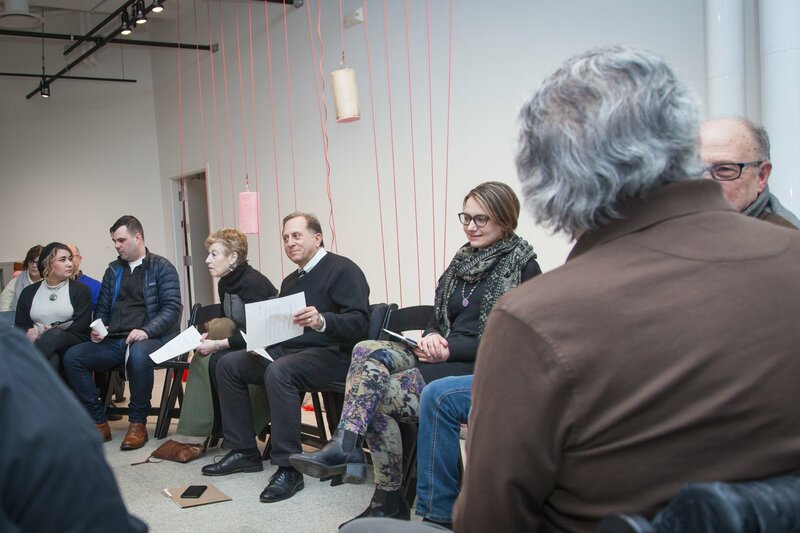
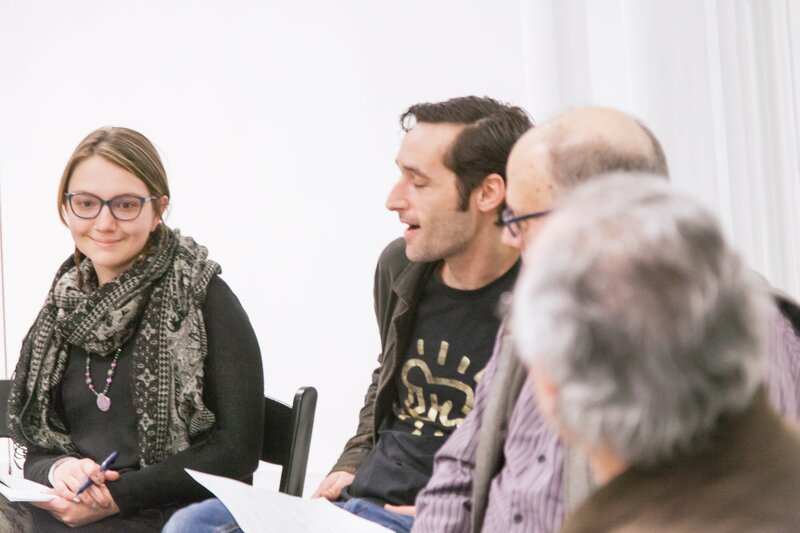
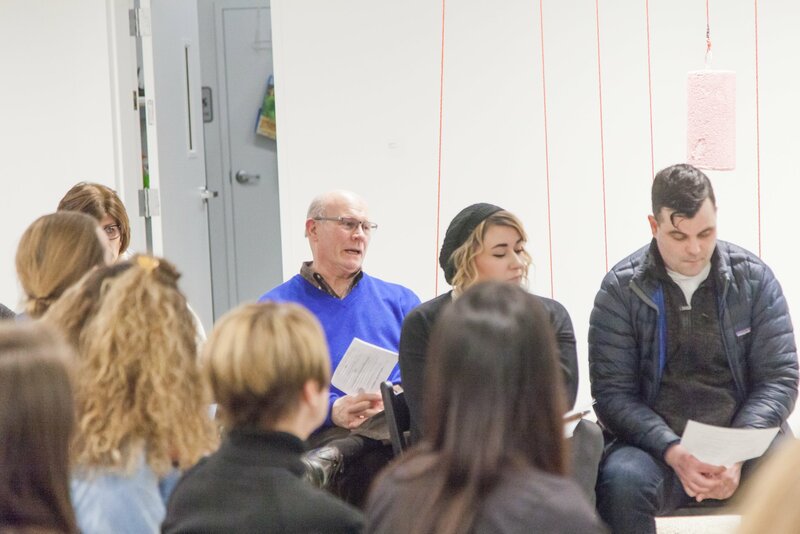
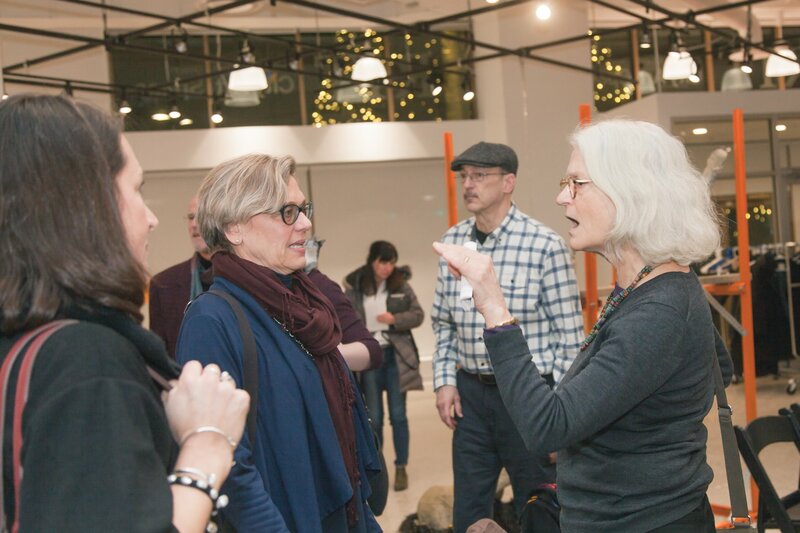
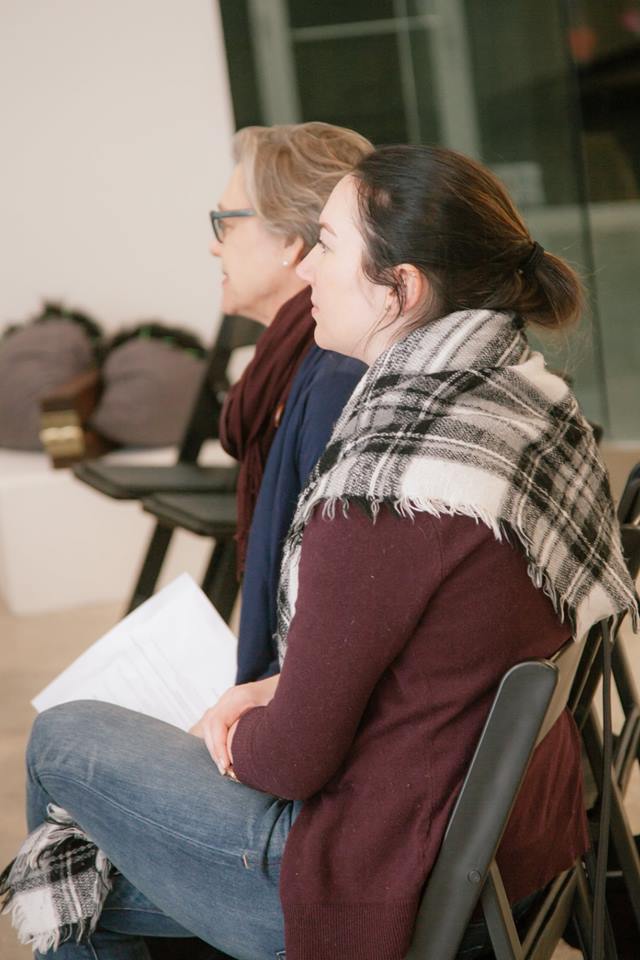
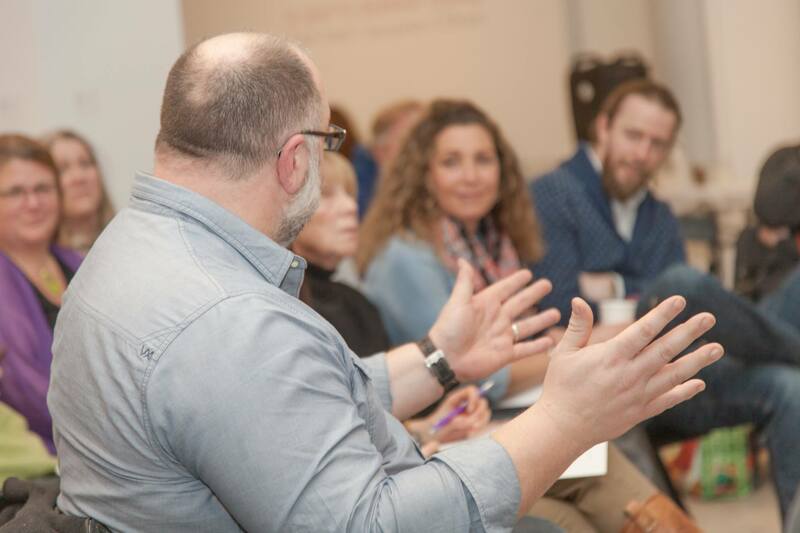
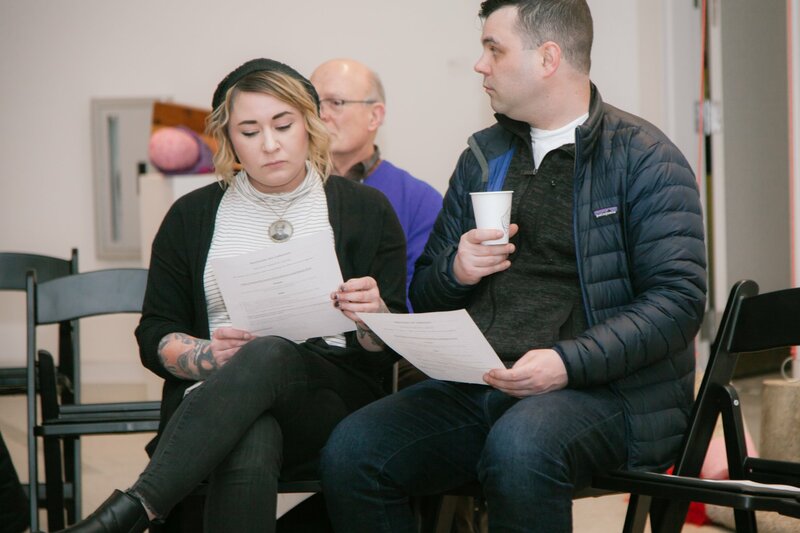
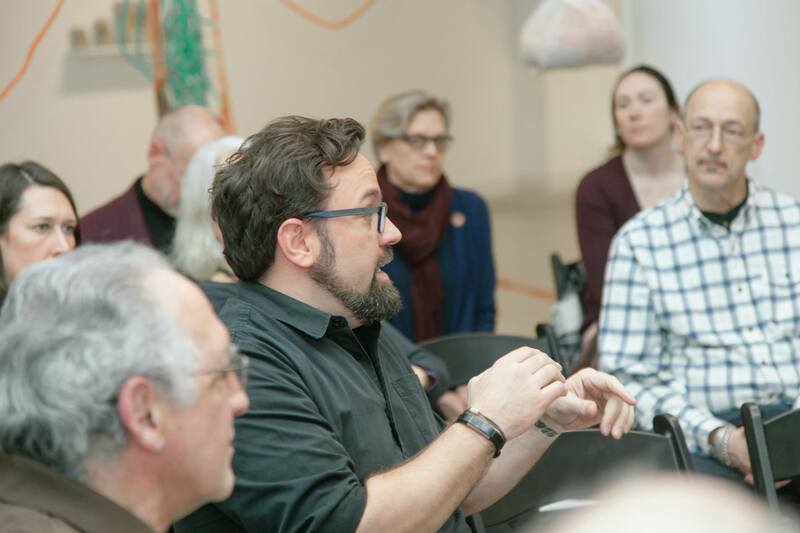
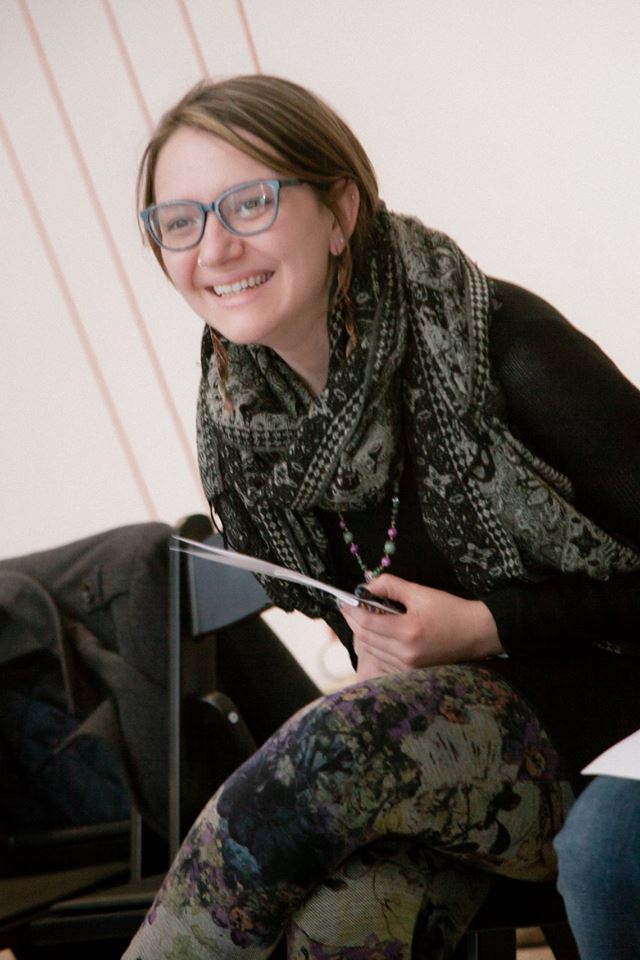
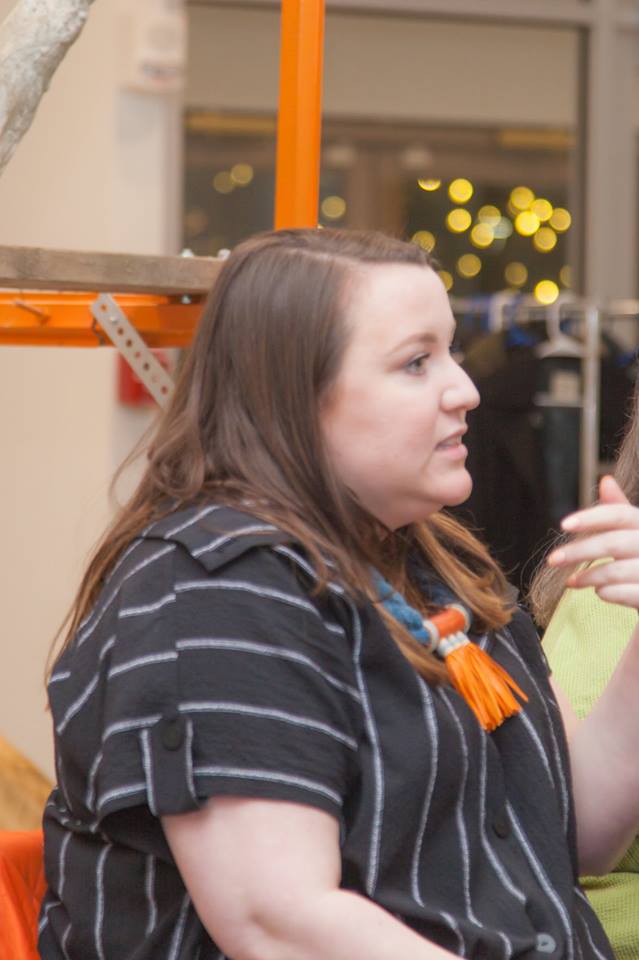

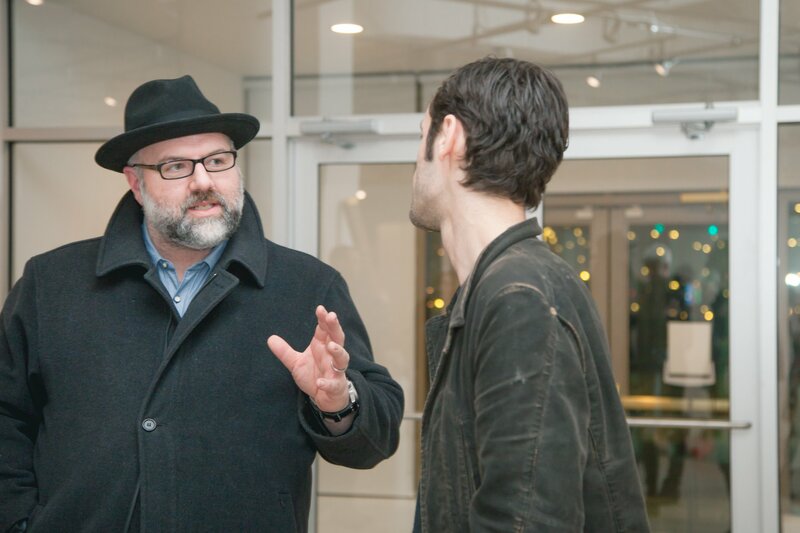
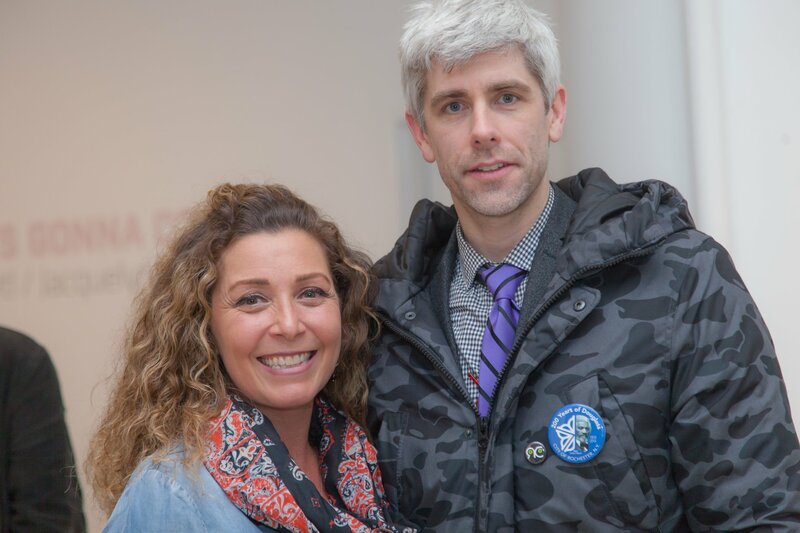
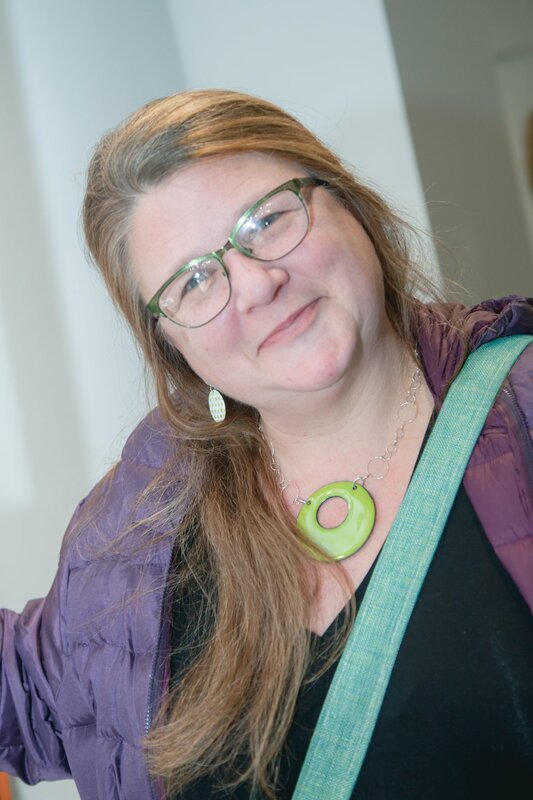
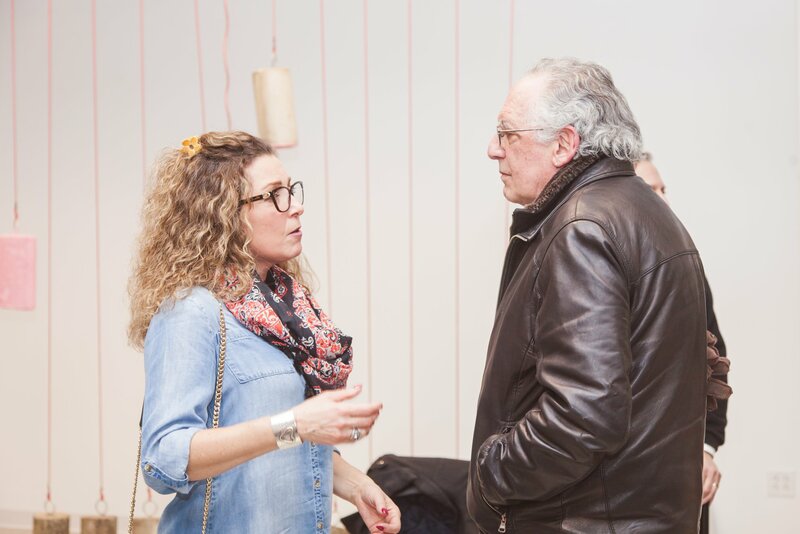
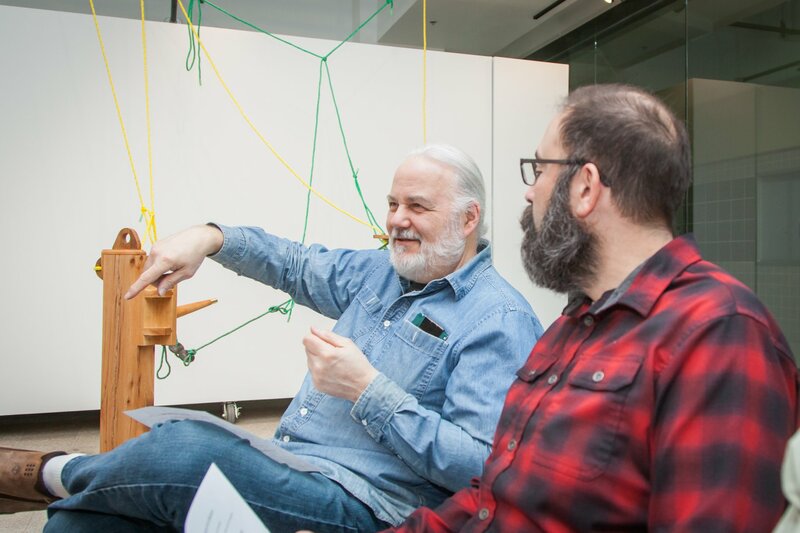
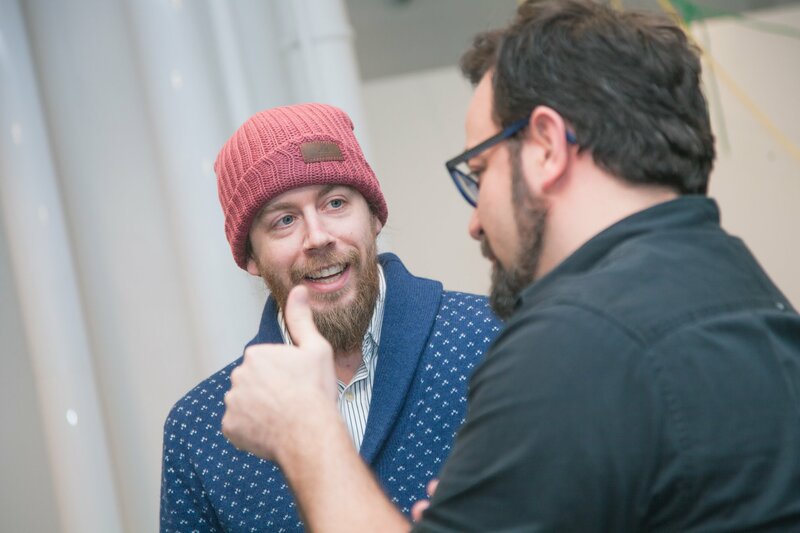
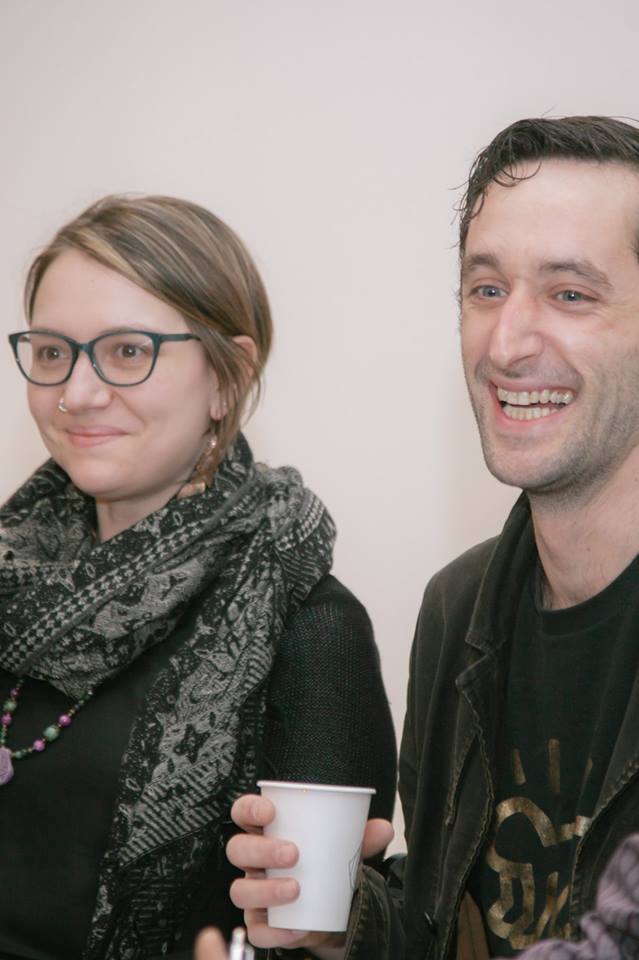
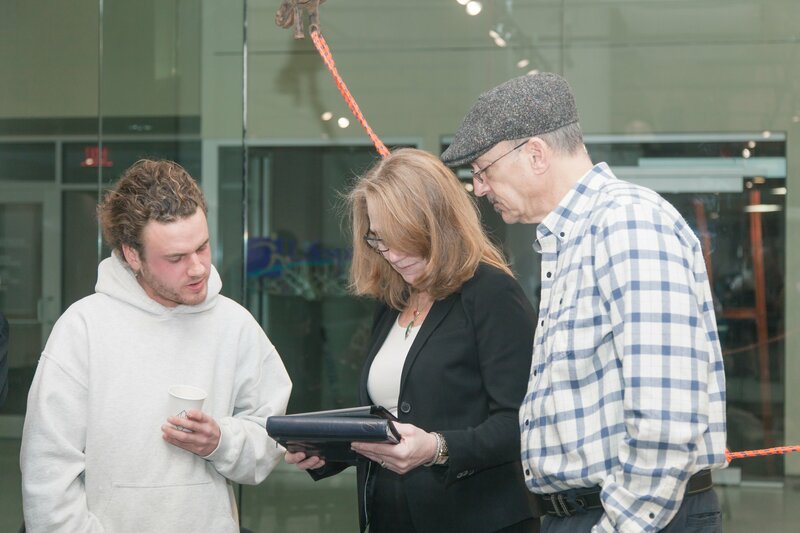

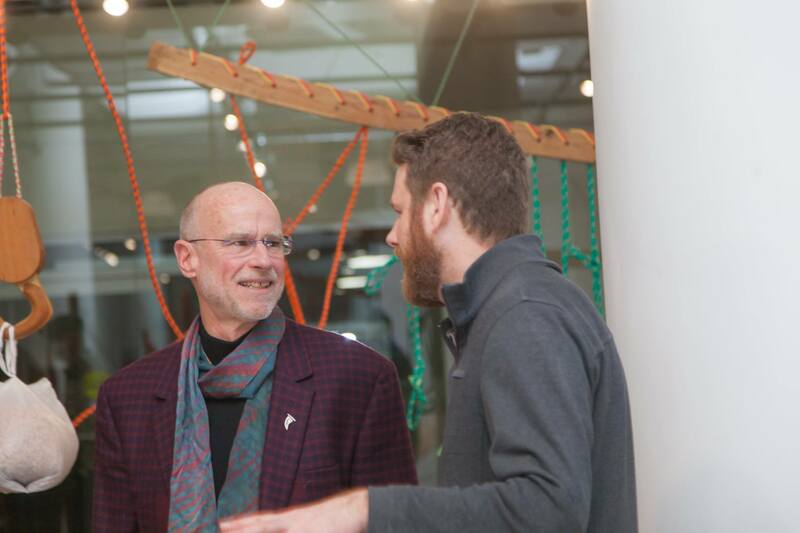
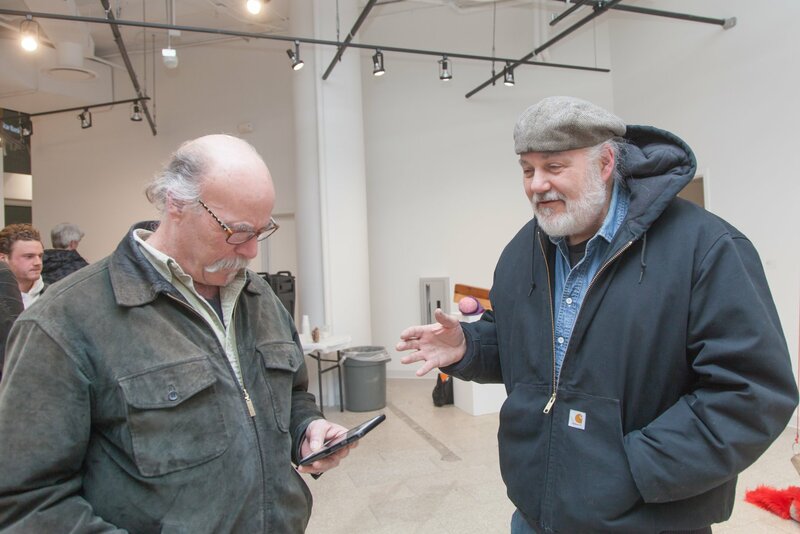
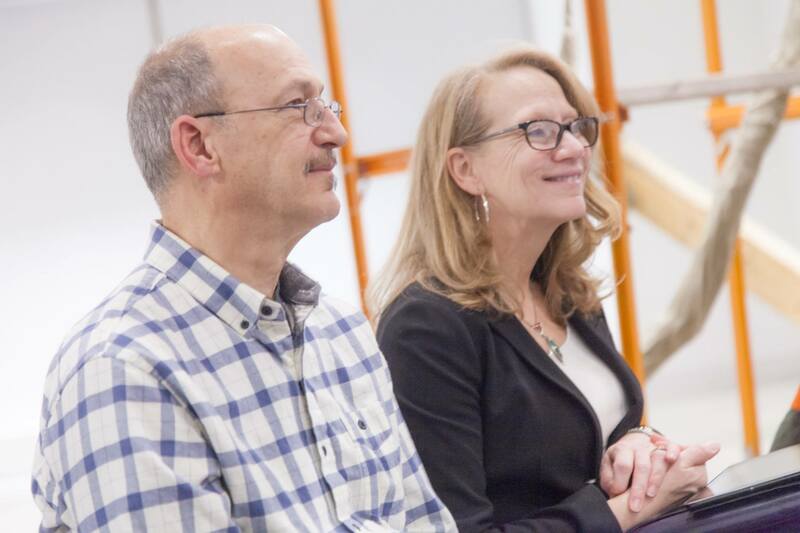





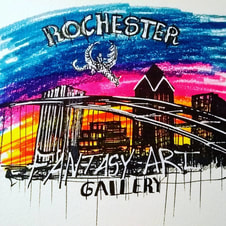

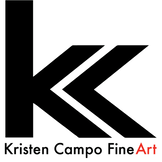
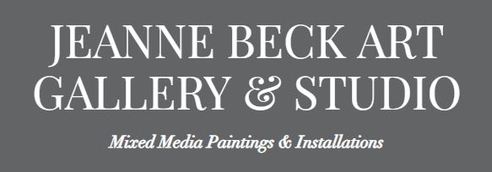
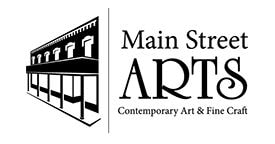
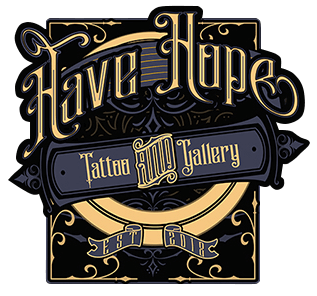
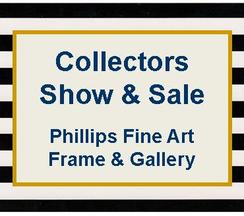
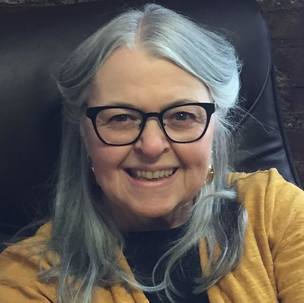

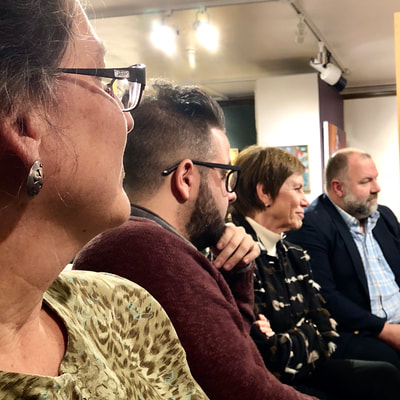
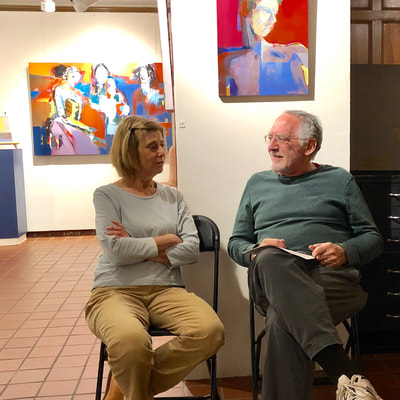
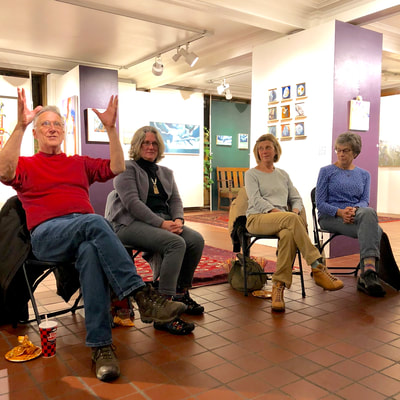
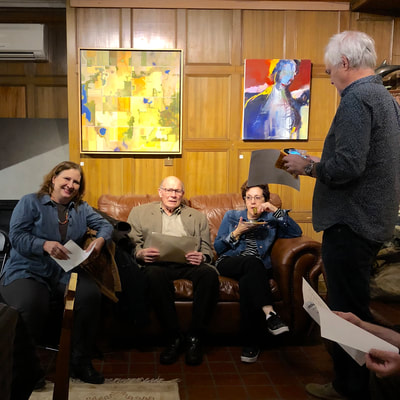
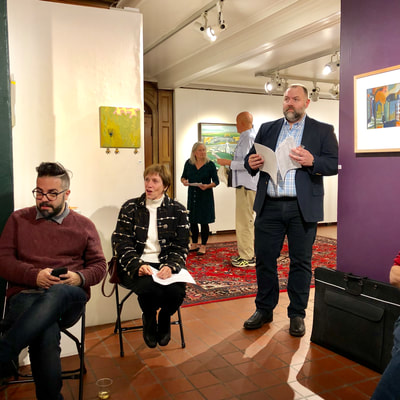
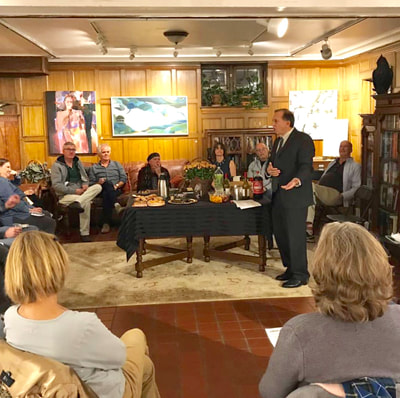
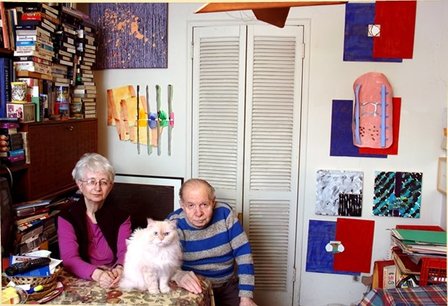
 RSS Feed
RSS Feed
